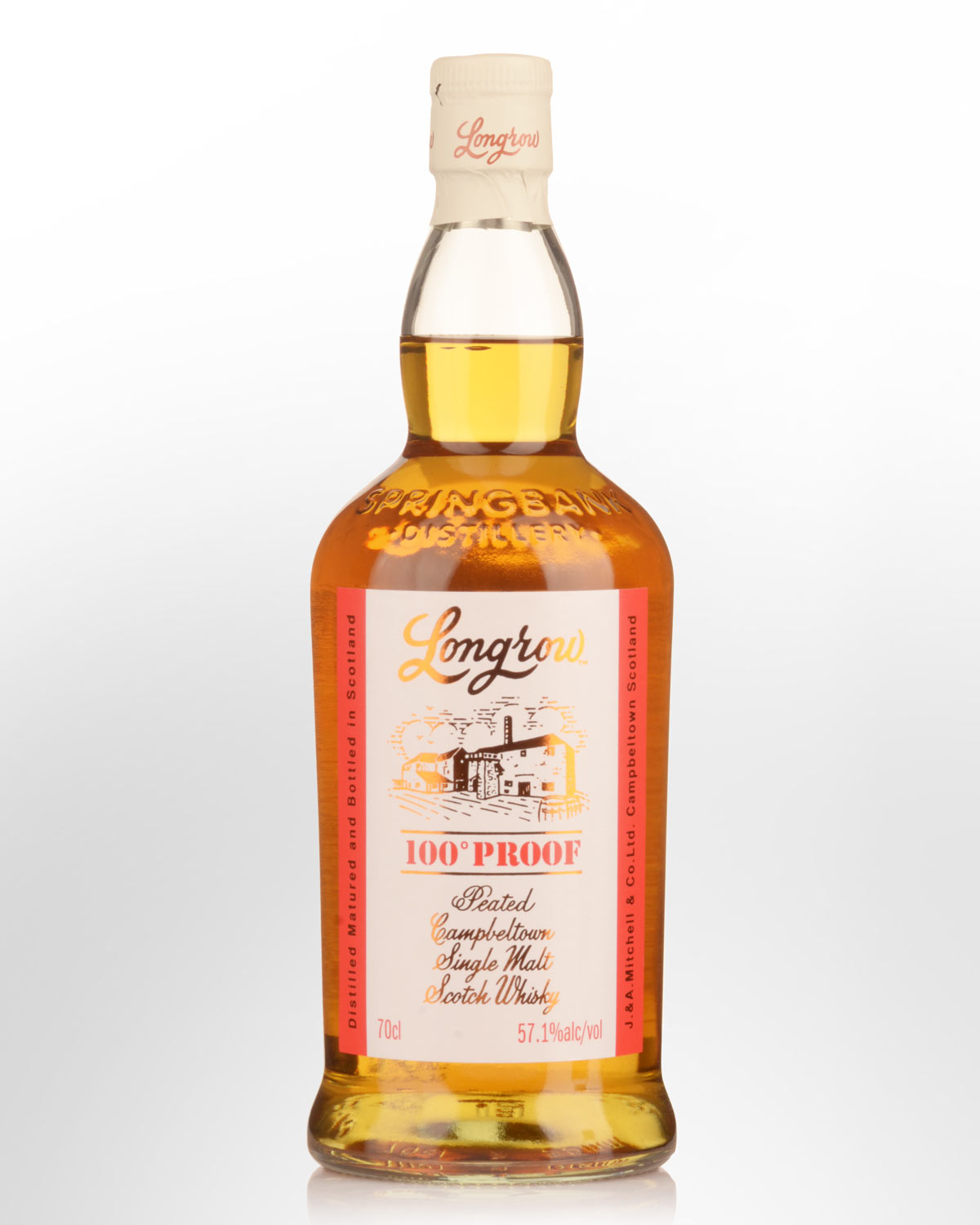
- Limit One per customer
- Nick's Import
Longrow 100 Proof Batch No.1 Single Malt Scotch Whisky (700ml)
"long, and highly maritime... a great success, with the pinot noir element now little more than an anecdote." - whiskyfun.com
The new Longrow 100 Proofs succeed the Longrow Red series. Released in annual batches, we have just received Batch No.1 from 2025. Wine finishes and Longrow have always been provocative and divisive amongst Springbank fans. It seems the distillery has taken note. Aged for four years in refill bourbon oak and finished for two years in refill Pinot Noir barrels, here, the auburn tinge often associated with the 'Red' series is almost indiscernible, the wine influence kept to a minimum due to second-fill casks. Regardless of whether or not you like the style, because this is 'Batch One', it probably means it won't be on the shelves for long. 57.1% Alc./Vol. Non-chill filtered.
Other reviews... The Longrow Red releases had both fans and haters. I wouldn’t count myself amongst either camp, but I’ve tried a few that I really liked, even though I generally don’t seek out wine matured single malts. I certainly tend to agree with Longrow in general, so there’s no good reason why the new Longrow 100 Proof shouldn’t suit me. Not too bad actually, although it might not be the most accessible whisky I've tried. This signifies a new chapter for Longrow, and it's certainly not a bad start. Yet, it's not entirely up to Springbank's standards either, is it? Longrow Red has always been a bit hit and miss. I'm curious to see how subsequent batches of the 100 Proof will work out. - wordsofwhisky.com
...This is in fact the follow-up to the well-known ‘Red’ series which, generally speaking, had left us rather cold, as the combination of peat and red wine often evoked something like coffee and mustard mixed together – the sort of concoction we used to dish out to freshers when I was a boy scout. However, in this case, although it is pinot noir, the fact that it’s second fill does offer some reassurance. Let’s see… Colour: pale gold (victory!) Nose: no cherries, no blackcurrants, no raspberries, no woodland mushrooms, no hare pâté, and no Russian leather. Hurrah! This is more of a clean, taut Longrow, very much in the vein of those solid NAS entry-level bottlings, which are always rather good – something like a Campbeltown mojito. Lemon, seaweed, smoke, beach sand and fresh garden mint, along with a faint yeasty note (which likely betrays its youth). With water: amaretti and wood-fired white bread. Virgin wool and a touch of chalk in the background. Mouth (neat): some hints of cherry-stem herbal tea but well removed from the lees of chambertin or Bollinger. More pepper, lemon zest, a dash of tarragon, grapefruit (not even the pink kind!) With water: tinned sardines appear, along with lemon and even a splash of olive oil. Finish: fairly long, and highly maritime. One might as well be standing on a fishing quay. Comments: a great success, with the pinot noir element now little more than an anecdote. We’re rather pleased. 88 points - whiskyfun.com
Notes from the producers... Nose: The peat smoke influence presents in medicinal, tcp notes, along with notes of redcurrants on the nose. Palate: Softer on the palate, the peat smoke has a more earthy, musty element now, with notes of creme brulee, vanilla and almonds. Finish: Red cola cubes, strawberry laces and marzipan are at the forefront of the smoky Longrow finish. Although the origins of 100° proof are often contested, it is widely agreed to have hailed from Britain in the 17th century when excise taxes were based on alcohol strength, thus “proof” of strength became a requirement. The process for testing and proving strength involved pouring the spirit on to gunpowder and subsequently taking a flame to the gunpowder, with an explosion indicating that the spirit was “over proof”, failure to ignite indicating that it was “under proof”, and a steady flame burning indicating the spirit was “100 proof”. The 19th century saw the development of a new, scientific calculation of strength devised by Bartholomew Sikes, who measured specific gravity of spirit and defined 100 proof strength as 4/7 alcohol purity, or 57.1% ABV. Since the USA proof system works differently, proof is considered double the ABV, or 50%. This whisky is therefore known as 114 proof in the US market.
to most of Australia
